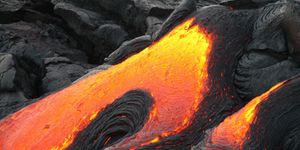Breaking down the mathematical laws of forests
Researchers from the Santa Fe Institute (SFI) have published a new study in the Proceedings of the National Academy of Sciences (PNAS) detailing the mathematical laws of forest complexity. Their findings have culminated in a framework that models the spatial and temporal patterns of jungles and forests.
"This paper goes a long way in showing how things that look arbitrary and capricious can in fact be understood within a mathematical framework," says SFI Distinguished Shannan Professor and former President Geoffrey West, who collaborated with Complexity Science Hub Vienna Postdoctoral Scientist Eddie Lee and SFI Professor Chris Kempes. As the authors of the study explain, the framework builds on metabolic scaling theory for forests to generate “ecological spatial patterns ranging from regular to random, and temporal patterns range from transient to stable.”
In simpler terms, the model essentially takes the metabolic principles of growth, death, and competition that exist for individual organisms and connects them to the diverse ways that plants are temporally and spatially variable.
"If you look at the microscopic structure of multicellular life, you see a lot of the same patterns playing out," explains Lee. What has been missing until now is a big-picture framework to analyze those patterns in plants on a macro-ecological scale.
The model, which builds on past models developed by the same team, allows for more specific contexts. For example, a scientist might want to use the framework to model how certain assumptions about trees, such as the relationships between size and shape, change in differing scenarios. This is possible because of the complexity science that is the backbone of the framework.
"One of the great things about having an analytical model of this kind is that it points to where data is missing, or where data is poor," adds West, "and the kinds of things people should be measuring." The team says they hope their work will inspire new areas of interdisciplinary investigation. "There is this marvelous interplay between the fields," he says.
Sources: PNAS, Eureka Alert








